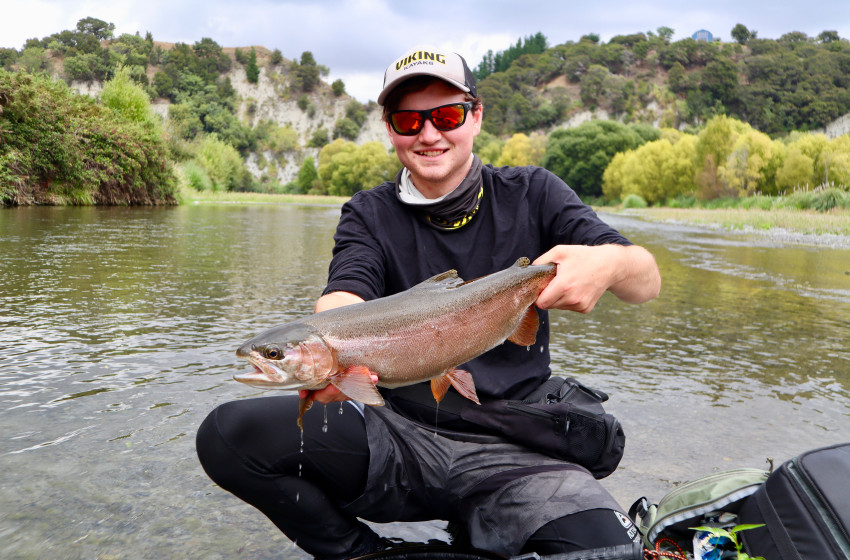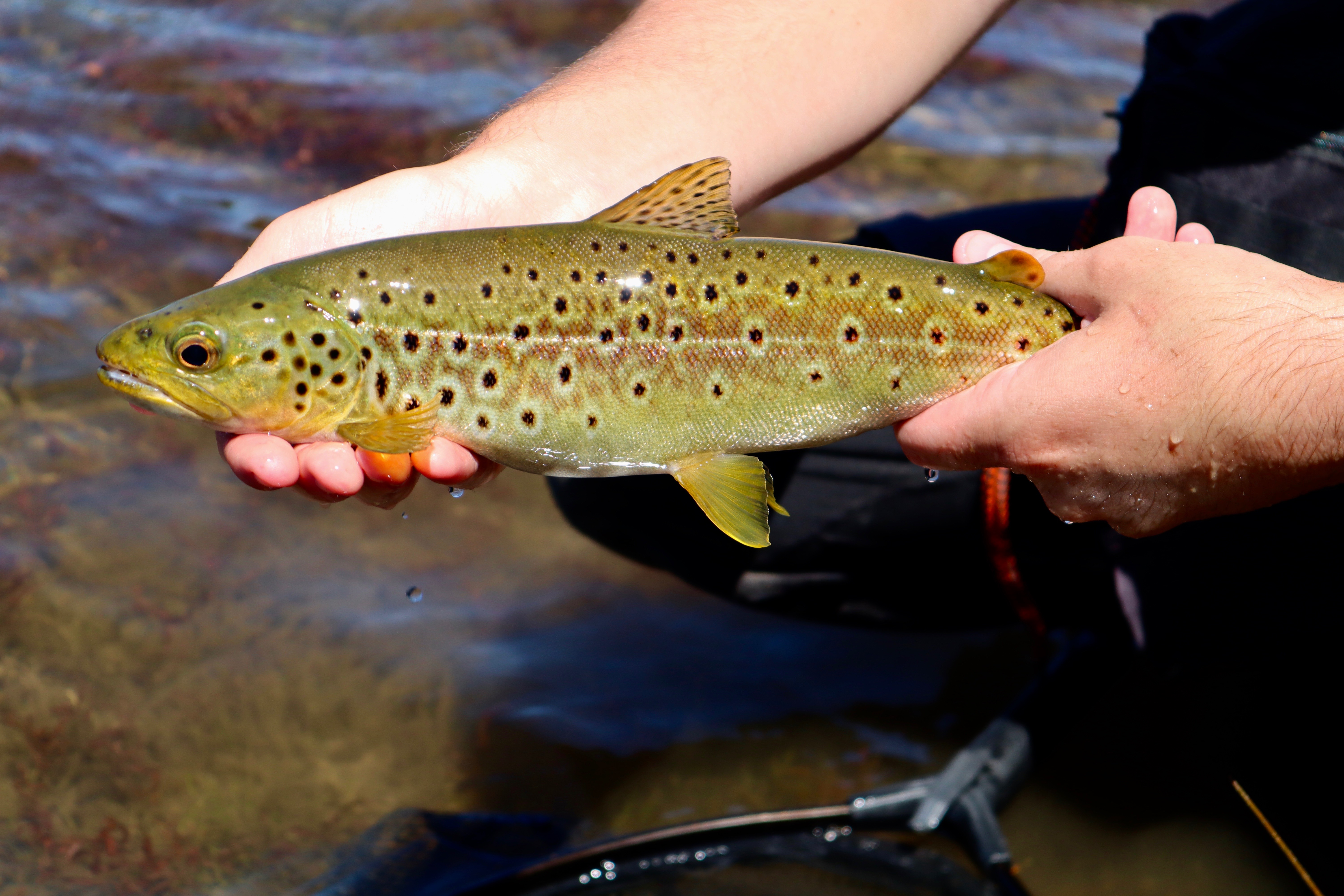Reel Life January 2022
- Hawke's Bay
- 8/12/2021

With the Christmas/New Year break looming, many people will have their minds wandering to the holidays and family time ahead.
The temperatures are rising, often hitting the high 20s, and the insects are abundant, making for some great days fishing.
As temperatures warm, trout will be making the most of terrestrial insects being carried downstream.
Report – Blair Whiting
For this month, I decided I’d do things a little differently.
Instead of reports, I will give you an access point on each of our major fisheries to get stuck into over the summer.
We are just coming into an excellent time to get on the water, so dust the rod off!
There are fish to be caught!
This guide is great for people just getting into the sport since it can be daunting to find work out where the fish are likely to be.
Ngaruroro River
Access point: Maraekakaho
Species: rainbow trout
The Ngaruroro River is a very large braided river, but during summer, it settles down into some great holding water. The entire stretch from Fernhill up to Whanawhana is stacked with rainbows. Most deep pools lying close to willow trees will hold at least a couple of fish. Walking the river is very easy in all sections since the river breaks apart, leaving shallow crossing points all over. Something to note is the river can get quite full of algae throughout the hottest periods. On hot days this river is perfect to drift a cicada dry fly with a cased caddis nymph underneath, as this is what the fish most often eat. If 30-degree heat isn’t your thing, the evening fishing can be spectacular. Brown and rainbow trout come right out into the open to feed, usually in long flat sections of the river. Try a very small dry fly or emerger for these fish.
Tukituki River
Access point: Havelock North (River Road)
Species: rainbow trout, brown trout
This point is a gem to fish over summer. Trout are out and about in the lower flows and very easy to spot. One thing to note about the Tukituki between the ocean and the Waimarama bridge is the large amount of grey mullet that run up the river. Many anglers talk to me about the uncatchable trout they have seen, and usually, the grey mullet are the culprit. Look out for the extended pectoral fins and fish swimming actively high in the water column rather than stationary. Tukituki trout predominantly feed on caddis with the odd mayfly thrown in. Finding trout in the river is as simple as walking along the edges and finding a significant depth change; this causes a nice slack piece of water for trout to sit in. During the afternoon and evenings, fish feed on caddis through the main parts of pools and right up in the fast riffles. Gear up with some caddis imitations, and you can’t go wrong on this river. Brown trout will be found more active in the late afternoon as the majority sit almost inactive during daylight hours.
Tutaekuri River
Access point: Dartmoor
Species: rainbow trout
One of my favourite access points in Hawkes Bay. The Mangoane enters the river here, bringing in some cold water for fish to shelter in. The mouth can have 10 + fish sitting in the comfort feeding away. The winding course of the river tends to shoot into the banks, which creates many pools in a short stretch. Combine this with some willows and a drop-off or two, and you have a huge number of fish. My tip for fishing around here would be to ignore the shallow areas and skip between pools to find the fish riding the drop-offs. A nymph drifted over these, even without a great cast, is usually eaten. I can get quite close to fish since the ruffled surface makes it hard for fish to see you. I fish pheasant tail and hare n copper nymphs on the river with great success, but these fish aren’t fussy. As with most Hawkes Bay fish, caddis is the favourite food. Sometimes backwaters form after floodwaters recede. These places always hold fish if they are nice and deep. A water boatman fly is my pick for these cruisers. Above right: A nice conditioned rainbow from the Tutaekuri
Mohaka River
Access point: Pakaututu Bridge
Species: brown trout
The best place in the bay to find brown trout has to be the Mohaka system. In a lot of places, they outnumber rainbows 2 – 1. I love fishing this river and the tributaries over summer when water levels have dropped down enough so that it is easy to wade. Lower levels also make it easy to find the fish since they can’t hide out of sight. Trout love to sit in any of the pools above and below the bridge. Quite often, you will see a few browns cruising the edges from the top of the bridge. An indicator rig with a few heavy nymphs is my choice for the deep pools. Remember, any slack water will hold fish and taking the time to fish the water out of the way for most anglers will pay off with more fish hooked. Jump up one of the many tributaries in the area, and you will find secluded fishing with large browns in an epic bush setting. Lengthen your leader on the smaller water!
Kuripapango Lakes

Kuripapango brown
Access point: Taihape Rd (Before Kuripapango)
Species: brown trout
My favourite lake in the region comes alive with fish from now until March. Fish fly out of the water to catch damselflies and dragonflies. It’s just in another league. This is the place to go if you love dry fly fishing as these little browns go mad for them. Fishing a dry on a stinking hot day with low wind is the ideal way to target these fish. The vast majority of the fish are around 1lb, but plenty are present in smaller numbers from 2lb and a few rare fish up to 4lb. Fly fishing or spinning with anything resembling a damselfly nymph is highly successful. In the peak of summer, the fish can get a little shy, so a longer leader and a better presentation may be required. Fishing nymphs under a dry works, as does retrieving two small nymphs through the weed beds. Short casts are all that are required as the fish hug the shoreline to grab their food.
Christmas/summer break
Summer is a busy time of year with plenty of people on the roads.
We urge you all to take care while driving to your fishing and holiday spots as roads can be dangerously busy, especially on some of those narrow backcountry roads which lead to popular campgrounds, fishing and swimming holes.
When travelling between waterways, please remember to always: Check, Clean, Dry to avoid spreading any unwanted pests between waterways. Respect other users, whether swimmers, rafters or trampers and take care and always tell someone where you are going, especially if you are heading off alone.
From the team here at Hawke’s Bay Fish and Game, we wish you all a very Merry Christmas and a happy New Year.
Tight Lines!